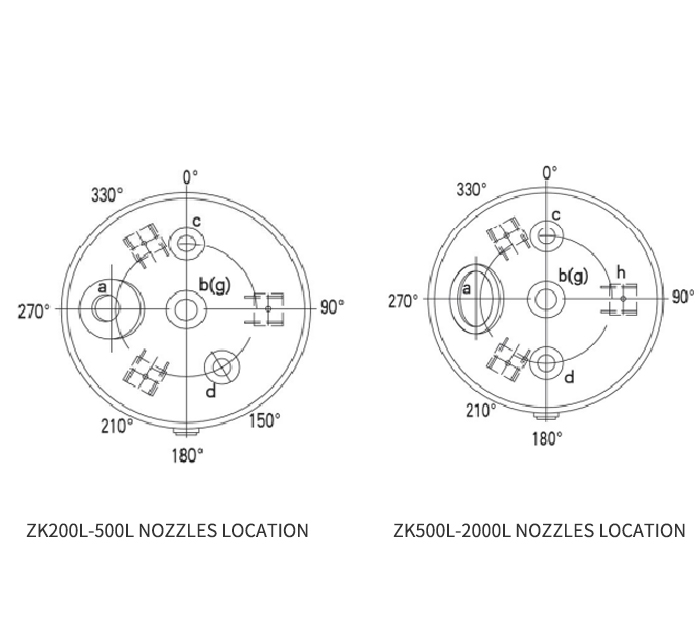I. Features of electrically heated glass lined reactor:
Advantage:
1. The electrically heated glass lined reactor is a reactor in which the medium in the jacket is heated by a heating rod to generate a heat source. The electrically heated glass lined reactor is mainly used to carry out the reaction under the conditions that it is inconvenient to provide heat sources such as steam. It has the characteristics of simple operation, flexibility and more precise temperature control.
2. In addition, the electrically heated glass lined reactor can save the cost of configuring heat sources such as steam, and the maintenance is also relatively simple.
Disadvantages:
1. Since the electrically heated glass lined reactor is heated by a heating rod, the heating cost is relatively high, and the stability of the power is required.
2. The heating rod equipped with the electrically heated glass lined reactor is easy to cause damage in the process of use. Although the replacement is simple, the maintenance cost is relatively high.
II. Our equipment advantages:
1. Our glass lined reactor adopts high-quality imported Czech enamel, and strictly abides by the cold enamel process to ensure the strict compliance of materials and procedures in the manufacturing process.
2. After the equipment is produced, it undergoes strict size measurement, water pressure and air pressure test, and high voltage electric spark test to ensure that all equipment has no quality problems before leaving the factory.
3. The equipment uses high-quality accessories, stainless steel PTFE gaskets, galvanized anti-corrosion clamps, nuts and bolts, and every detail is well done.
4. The heating rods are made of high-quality heating rods that meet EU standards to maximize the service life of the heating rods.
Equipment Design Data
| Shell |
|
|
|
|
|
| Design Pressure(MPa): | ATM |
|
|
| Working pressure(Mpa): | ATM |
|
|
| Design Temperature(℃): | -19-200 |
|
|
| Working Temperature(℃): | -19-180 |
|
|
| High Voltage Test(KV): | 20 |
|
| Enamel Thickness(mm): | 0.8-2.0 |
|
| Application Medium: | It can withstand the corrosion of various concentrations of organic acids, inorganic acids, organic solvents and weak alkalis (except for hydrofluoric acid, fluoride ion-containing media, the phosphoric acid and strong alkali concentration is greater than 30%, and the temperature is greater than 180 degrees Celsius). |
|
|
|
|
|
|
|
|
|
|
Equipment Dimension Sheet
| Nominal Capacity(L) | Actual Capacity(L) | Main Dimension(mm) | Nozzle DN | Weight(Kg) |
| D | D1 | D2 | H | H1 | H2 | a | b | c | d | g | h |
| ZK200 | 240 | 600 | 420 | 420 | 1340 | 309 | 965 | 125 | 70 | 70 | 70 | 70 | - | 236 |
| ZK300 | 360 | 700 | 420 | 490 | 1745 | 345 | 1070 | 125 | 80 | 70 | 70 | 80 | - | 408 |
| ZK500 | 600 | 800 | 480 | 560 | 1885 | 380 | 1370 | 150 | 80 | 80 | 70 | 80 | - | 544 |
| ZK1000 | 1200 | 1000 | 600 | 700 | 2360 | 439 | 1770 | 150 | 80 | 80 | 80 | 80 | - | 915 |
| ZK2000 | 2400 | 1300 | 780 | 910 | 2670 | 515 | 1895 | 400x300 | 100 | 80 | 80 | 100 | 80 | 1400 |




















